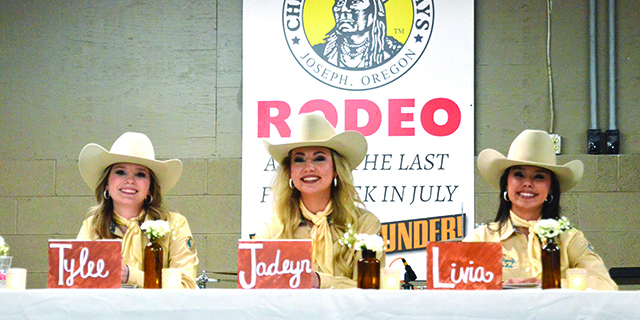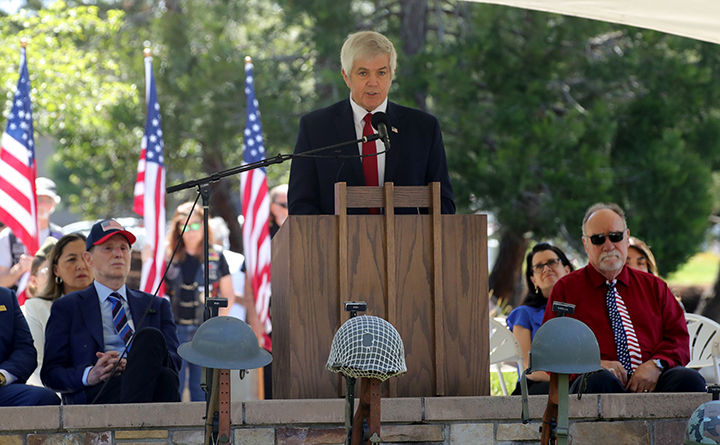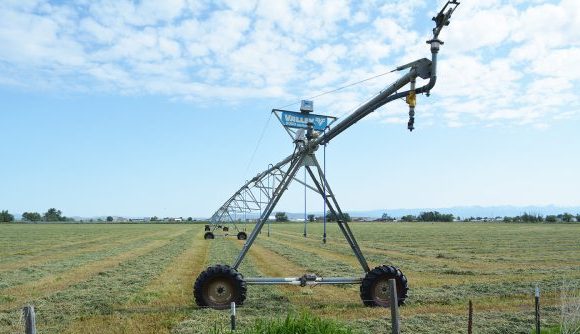Staying injury free during the long coronavirus-induced layoff
Published 2:30 am Friday, September 18, 2020

- Members of the La Grande girls soccer team take part in a summer practice Thursday, Aug. 20. A key for how well athletes avoid injuries has to do with how they handle long layoff periods. Staying fit during those times is important, but there also is a balance athletes have to find to not overwork themselves and see their body break down.
LA GRANDE — High school athletes in Oregon are several months away from having an opportunity to officially start their sports season.
The Oregon School Activities Association has put a four-season plan in place for 2021 — winter (Dec. 28 through March 7), fall (Feb. 22 through May 2, a week later for football) and spring (April 19 through June 27) making up seasons 2-4 in the new format with the COVID-19 pandemic still causing health concerns in the state.
Season 1, however, is an interesting addition to the schedule. From Aug. 31 to Dec. 27, schools that meet the health metrics put forward by the state have a four-month window to train, condition and, possibly, have games. Any contests that take place wouldn’t be officially sanctioned by the OSAA, and any sports — provided they are allowed (football, basketball and wrestling still have limitations) — can use the time typically set for fall sports to get prepared for the season.
That season could end up being important in helping athletes to stay injury free during a prep sports layoff that has been in place since mid-March.
“Since the seasons are supposed to start off if they do in December, making sure condition and fitness levels are maintained throughout this time for injury prevention (is important), which is pretty much the same as coming into the season,” said Brook Jorgensen, M.S. and A.T.C. for Mountain Valley Therapy in La Grande and also the La Grande High School athletic trainer.
A concern going into the start of a season is whether or not athletes have maintained their needed fitness level during any long layoffs, such as during the summer or possibly for athletes who play just one sport. Whether or not they have not only can impact the amount of time it could take them to get into game shape, but more importantly can help limit injuries.
“Lots of muscle strains, muscle pulls, and it kind of depends on the student’s preexisting conditions,” Jorgensen said of some of the injuries she has seen. “If you are going back to a sport where you are running and not in shape you are more likely for muscle strains or even knee injuries.”
With a 9-1/2-month layoff between OSAA seasons, that could make season 1, while it may seem inconsequential given the lack of contests, all the more important. Jorgensen said she has talked with athletes on both ends of the spectrum — those who have been able to be active during the pandemic and those who haven’t.
“It’s a mix. I think some kids, especially if they have a hard time working out by themselves, have a hard time (staying fit),” she said. “I know some kids in baseball, softball, soccer, they have been able to maintain some.”
Cece Aguilera is an LHS senior for the girls soccer team who typically, she said, is always on the pitch as she and her sister, Rosie, both play for a club team in Portland when the Tigers’ season isn’t in swing. That usually means playing soccer for La Grande from August until November, and playing club soccer from November until June.
“If we make it to state (the season runs through) June, and then there’s regionals, so last year (2019) our season ended around June 26,” Cece Aguilera said. “I don’t always have that big of a break, which is nice because I’m always doing something with soccer.”
That changed this spring when the coronavirus pandemic led to shutdowns and broke up team activities for months on end. Athletes suddenly had to train on their own or perhaps with a friend or family member.
Aguilera said she and her sister, who is an LHS sophomore, kept each other motivated and often did train together during that time.
“When this first started we were not going out. It was just us. When we had free time, we didn’t have practice, it was like, ‘Let’s do our workout,'” she said. “If I didn’t want to go but she wanted to it was ‘Oh, let’s go,’ and vice versa. That definitely helped us to get out more. And we’re super competitive so when we’re running we push each other to do our best.”
The extra time off, though, had an added bonus for Aguilera.
“I definitely started to stretch a lot more because I was more watching videos on how to take care of your body,” she said. “Last season I hurt my knee, and I’ve never hurt myself, so I started to do that.”
Students who push too hard can make themselves more susceptible to injury as well, Jorgensen noted. While staying active throughout the year is important, allowing recovery time is big, too.
“If you are typically doing a fall sport and transition to a winter sport, you’re going to be in great shape by the time that season starts,” Jorgensen said. “The other side to that is your body needs a break, and not all students take a break, so your body can get run down.”
Aguilera said she does give herself time to rest in the midst of the long seasons, usually during the summer, but conversely knows the need to not rush back into training too quickly.
“I definitely have done that where I take a couple weeks off and then try to run and sprint my mile again, something like that, so def try to ease back the first couple days and get back into it, just to avoid injuries,” she said.
The shortened seasons — each season has two weeks of practice (three weeks for football), seven weeks of contests and a “culminating week” that OSAA is still laying out plans for — does give Jorgensen concern that athletes who may suffer a mild injury that would only keep them out a short time will miss larger chunks of the season or not be fully healthy by the time the next one starts if they play multiple sports.
“Because the seasons are so much shorter than normal, it doesn’t give the turnaround time to get back,” she said, adding that “if you get injured part way through, and it takes a couple weeks” to recover, a setback could mean the end of a season.
The key for the trainer is for athletes to keep taking care of themselves to limit injuries, while Aguilera wants to enjoy the upcoming season when it does happen, even if it is shorter than usual.
“My big thing would be maintaining your conditioning levels, working on any weaknesses, and take care of any injuries,” Jorgensen said.









